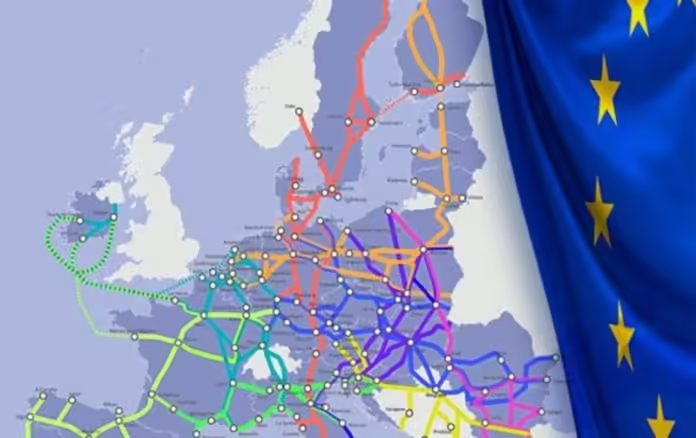Today, the European Council adopted a revised regulation regarding the development of the trans-European transport network (TEN-T). The new law aims to build a reliable, seamless, and high-quality transport network that ensures sustainable connectivity across Europe without physical interruptions, bottlenecks, and missing links.
“The TEN-T network is a key instrument of the EU’s transport policy with a huge contribution to our sustainable mobility objectives, as well as to economic, social, and territorial cohesion. The adoption of the revised regulation today is definitely a milestone towards a sustainable and resilient network in Europe, which should address the mobility concerns of our citizens and businesses for the years to come,” said Georges Gilkinet, Belgian deputy prime minister and minister of mobility.
The TEN-T network will be developed or upgraded step by step with the new regulation setting clear deadlines for its completion in three phases: until 2030 for the core network, 2040 for the extended core network, and 2050 for the comprehensive network. The new intermediary deadline of 2040 was introduced to advance the completion of large-scale, mainly cross-border projects, such as missing rail connections, ahead of the 2050 deadline that applies to the wider, comprehensive network.
To ensure infrastructure planning meets real operational needs and by integrating rail, road, and waterways, the new regulation merges the core network corridors with the rail freight corridors to the so-called ‘European Transport Corridors’. These corridors are of the highest strategic importance for the development of sustainable and multimodal freight and passenger transport flows in Europe.
In response to the impact of Russia’s war of aggression against Ukraine and to ensure better connectivity with key neighboring countries, the new regulation extends four European Transport Corridors of the TEN-T network to Ukraine and Moldova whilst downgrading cross-border connections with Russia and Belarus.
Following today’s adoption, the legislative act will be signed by the presidents of the Council and of the European Parliament before being published in the EU’s official journal in the coming weeks. The revised regulation will enter into force twenty days after this publication.
The proposal for a revised regulation was adopted by the Commission on 13 December 2021 as part of the legislative package for efficient and green mobility. In response to the impact of Russia’s war of aggression against Ukraine, the Commission adopted an amended proposal on 27 July 2022 introducing several changes to the initial text.
“The revised proposal calls for unification of the TEN-T network by using the European standard rail track gauge. It also strives for better connectivity of Ukraine and the Republic of Moldova with the EU through the extension of the relevant European Transport Corridors,” said Barbara Thaler (EPP/AT) and Dominique Riquet (Renew Europe / FR), the European Parliament’s co-rapporteurs on this file. A provisional agreement was reached between the co-legislators on 18 December 2023.





